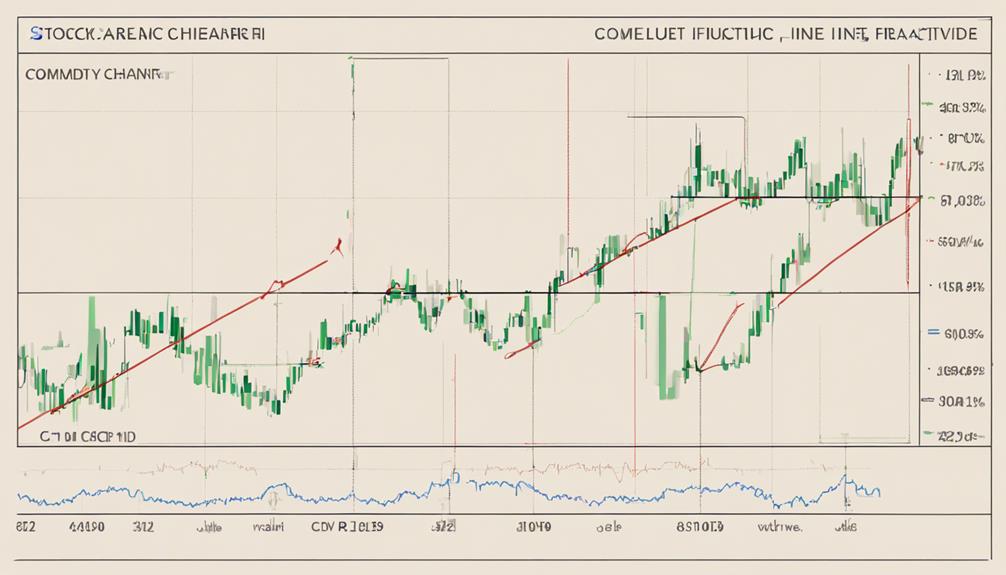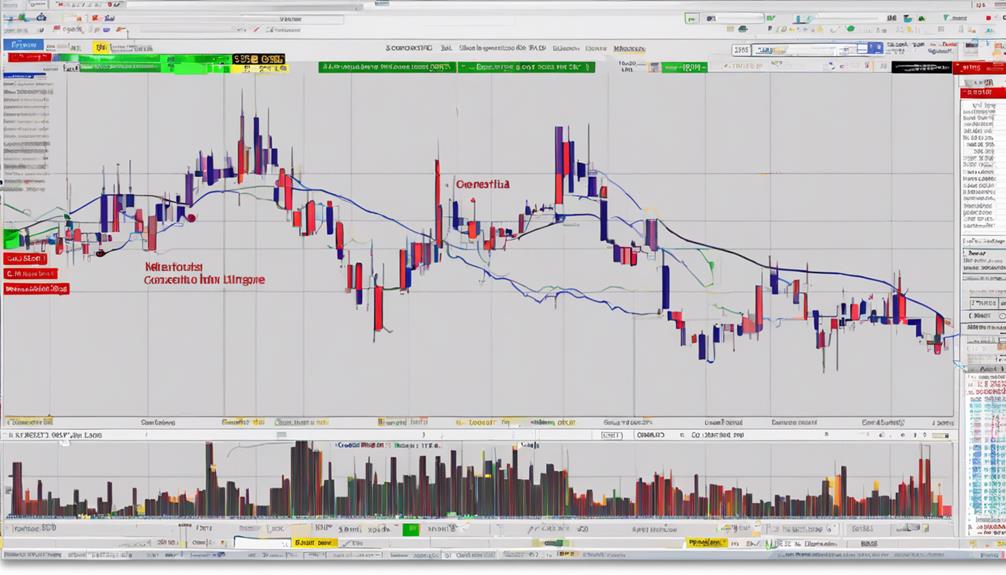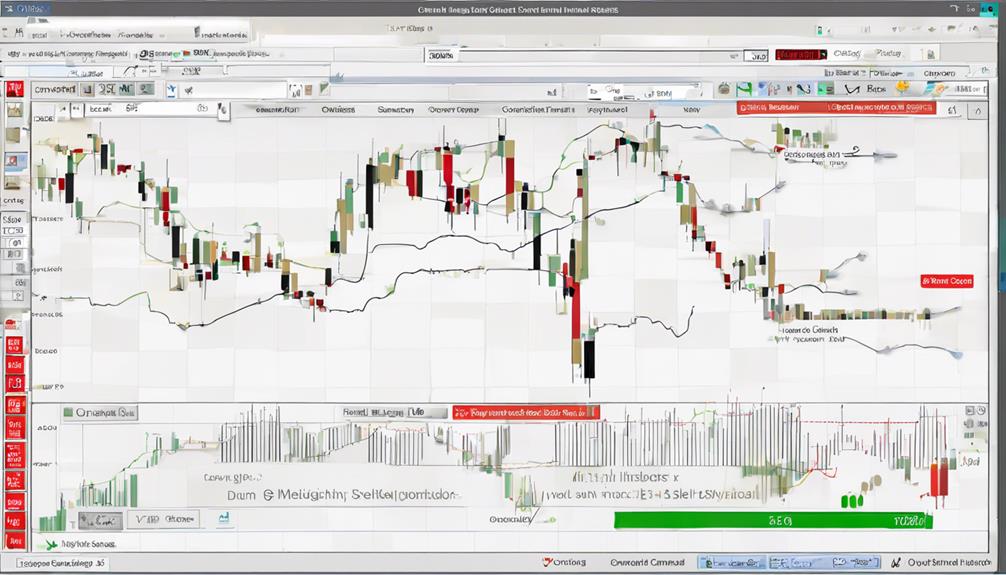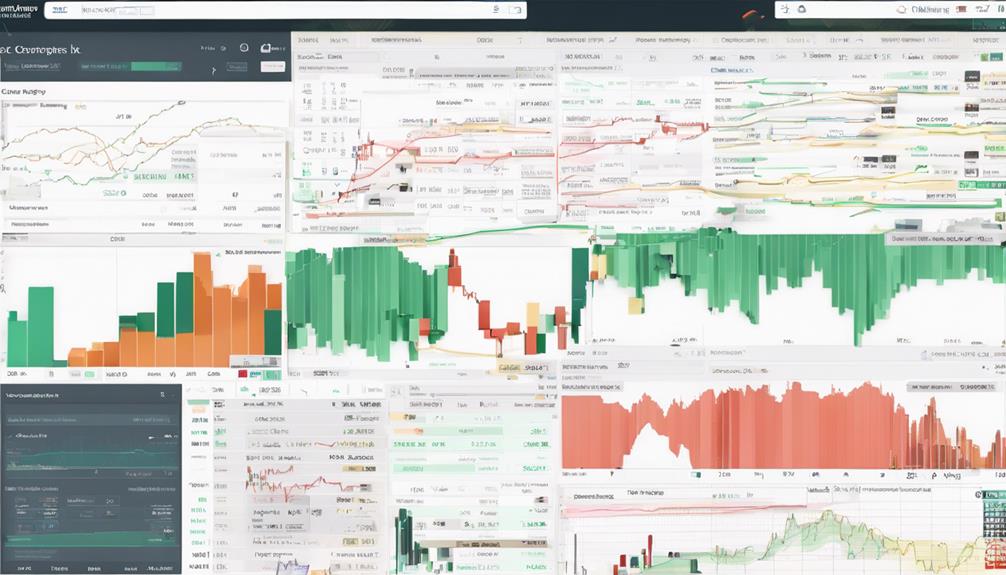The Commodity Channel Index (CCI) serves as a valuable tool in the realm of technical analysis, aiding traders in assessing a security's deviation from its average price. This indicator holds significance in identifying potential market trends and reversal points, offering insights into overbought and oversold conditions.
However, the nuances of interpreting CCI signals and integrating them with other technical indicators remain key to informed decision-making in trading. As we explore the depths of CCI's functionality and practical applications across various asset classes, a deeper understanding of its potential impact on trading strategies emerges.
Understanding the CCI Indicator
An in-depth comprehension of the Commodity Channel Index (CCI) indicator is essential for traders seeking to effectively gauge market conditions and identify potential trading opportunities. Developed by Donald Lambert, the Commodity Channel Index measures the current price level of an asset against its average price over a specified period.
By comparing these values, traders can identify overbought or oversold conditions in the market. A CCI value above +100 indicates an overbought condition, potentially signaling a reversal to the downside, while a value below -100 suggests an oversold condition, hinting at a possible upward reversal.
Traders often use moving averages in conjunction with CCI to confirm signals and adjust stop-loss levels accordingly. Understanding these dynamics can help traders capitalize on market trends, especially during a bullish trend where CCI can serve as a valuable tool for making informed trading decisions based on sound technical analysis methods.
Calculating the Commodity Channel Index

To effectively calculate the Commodity Channel Index (CCI), traders must first understand the methodology behind deriving this crucial technical indicator. The CCI is computed by taking the current typical price and subtracting a simple moving average of the typical price from it.
The typical price is the average of the High, Low, and Close prices of the asset under consideration. This value is then divided by 0.015 times the mean deviation to obtain the final CCI value.
The default period for CCI calculations is typically set at 20, although traders may adjust this parameter to align with their specific trading strategies. The CCI serves as an unbound oscillator that aids traders in identifying overbought and oversold levels within the market.
Interpreting CCI Signals

Interpreting CCI signals provides traders with a valuable tool for identifying potential market trends and making informed trading decisions based on technical analysis. When using the CCI, traders look for CCI values that fall within certain ranges to determine trend direction and strength.
A CCI above +100 suggests a strong uptrend, indicating a potential buying opportunity, while a value below -100 signifies a strong downtrend, presenting a possible selling opportunity. Traders observe when CCI values make a new high, signaling a move higher in the price of a security.
Additionally, watching for CCI values falling within the standard oversold territory can help traders anticipate potential reversals or corrective moves. To calculate the CCI, the typical price of a security is used, and the result is divided by three. It is crucial to confirm CCI signals with other technical analysis tools and consider adjusting CCI levels based on the specific volatility of the asset for more accurate interpretations.
Practical Applications of CCI

Drawing on the foundational principles of interpreting CCI signals, the practical applications of the Commodity Channel Index (CCI) extend to guiding traders in identifying opportune entry and exit points within the market. By measuring the current price level against an average over a specific period, CCI helps traders pinpoint overbought and oversold levels, indicating potential reversal points.
When CCI values surpass +100, it suggests a strong uptrend, presenting a buying opportunity for traders seeking to capitalize on the market's momentum. Conversely, CCI values dipping below -100 indicate a robust downtrend, signaling a selling opportunity for traders looking to benefit from downward market movement.
Furthermore, observing any divergence between CCI and price movements can serve as a valuable indicator of potential market reversals. Utilizing CCI in this manner empowers traders to make informed decisions, strategically entering and exiting positions based on the prevailing market conditions and CCI signals.
CCI in Different Asset Classes

Utilizing the Commodity Channel Index (CCI) across different asset classes offers traders a versatile tool for analyzing market conditions and identifying potential trading opportunities. CCI is commonly used in analyzing stocks, commodities, forex, and various other asset classes.
Traders apply CCI to these markets to pinpoint overbought and oversold conditions, providing valuable insights for trading decisions. The indicator's effectiveness in determining trend strength makes it a valuable component of both short-term and long-term trading strategies.
Understanding how CCI behaves in different asset classes can significantly enhance trading decisions and risk management practices. By incorporating CCI into their analytical toolkit, traders can better navigate the complexities of various markets and leverage this momentum oscillator to optimize their trading strategies effectively.
Its adaptability and widespread use underscore its significance in the realm of technical analysis across diverse asset classes.
-What are the advantages of using Commodity Channel Index in Technical Analysis for Swing Trading?
The commodity channel index for swing trading is a valuable tool in technical analysis. It helps traders identify potential trend reversals and overbought or oversold conditions. By using this indicator, traders can make more informed decisions and maximize their profits in the swing trading market.
Frequently Asked Questions
How Do You Read a Commodity Channel Index?
Reading a Commodity Channel Index involves interpreting values above +100 as potential buying opportunities in an uptrend and values below -100 as selling opportunities in a downtrend. Confirm signals with additional technical tools for accuracy.
How to Use CCI Indicator for Trading?
Utilize the CCI indicator for trading by interpreting overbought and oversold levels above +100 and below -100 respectively. Incorporate it with other technical tools for confirmation. Adjust CCI levels according to market volatility for precise signals.
Is CCI a Good Indicator?
CCI is a valuable indicator for traders, offering insights into market conditions with its ability to pinpoint overbought and oversold levels accurately. Its adaptability, lack of fixed limits, and compatibility with other tools enhance decision-making and trading precision.
What Is the Difference Between RSI and Commodity Channel Index?
While RSI measures price momentum on a scale from 0 to 100, identifying overbought and oversold conditions, CCI assesses an asset's price deviation from its average without fixed boundaries. Both are crucial indicators in technical analysis.
Conclusion
In conclusion, the Commodity Channel Index (CCI) is a valuable tool for traders to identify potential trends and reversal points in the market.
By calculating variations from average price levels, CCI helps determine overbought and oversold conditions.
Traders can use CCI signals in conjunction with other technical indicators for informed decision-making.
How can incorporating CCI into your trading strategy enhance your ability to pinpoint profitable opportunities in the market?
